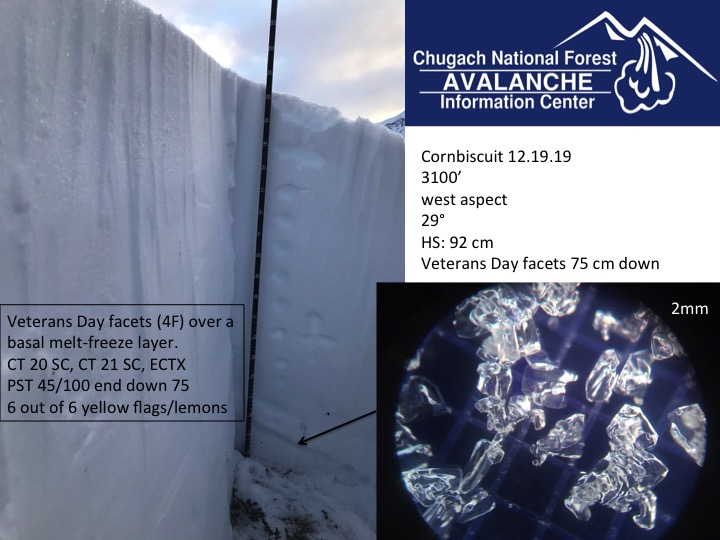Turnagain Pass
|
|
A MODERATE avalanche danger exists above 2500′ for lingering wind slab avalanches in steep wind-loaded terrain and cornice falls. Triggering a wind slab 1-3′ thick on an unsupported slope or cross-loaded gully is still possible. Give cornices and glide cracks a wide berth. Keep the chance of triggering a persistent slab avalanche in high elevation terrain on your radar.
The final accident report from the first US avalanche fatality of the 2019/20 season that happened in Colorado is available and is worth a read: https://avalanche.state.co.us/caic/acc/acc_report.php?acc_id=726&accfm=inv. Our deepest condolences to family, friends and all involved.



